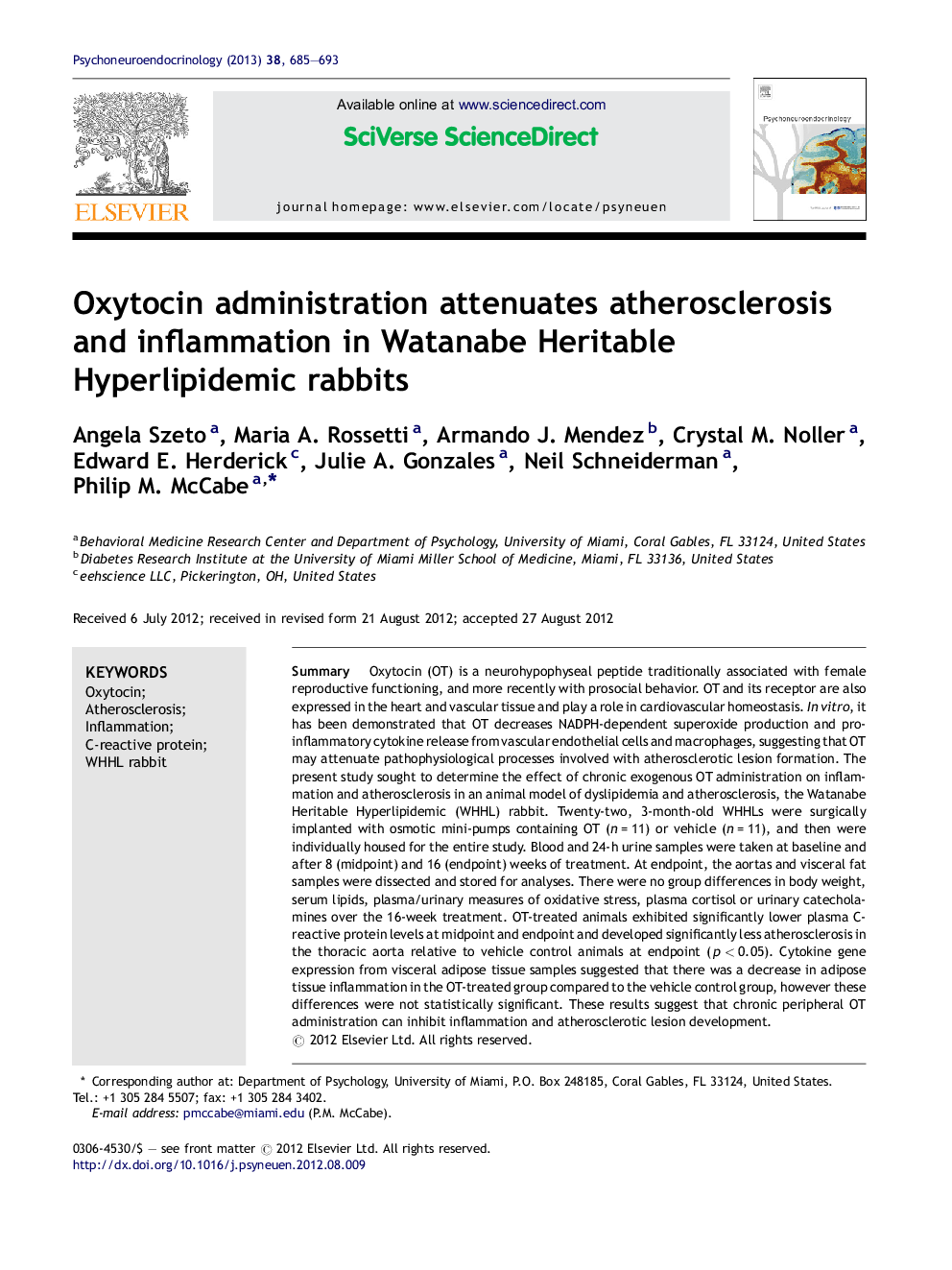| Article ID | Journal | Published Year | Pages | File Type |
|---|---|---|---|---|
| 10306139 | Psychoneuroendocrinology | 2013 | 9 Pages |
Abstract
Oxytocin (OT) is a neurohypophyseal peptide traditionally associated with female reproductive functioning, and more recently with prosocial behavior. OT and its receptor are also expressed in the heart and vascular tissue and play a role in cardiovascular homeostasis. In vitro, it has been demonstrated that OT decreases NADPH-dependent superoxide production and pro-inflammatory cytokine release from vascular endothelial cells and macrophages, suggesting that OT may attenuate pathophysiological processes involved with atherosclerotic lesion formation. The present study sought to determine the effect of chronic exogenous OT administration on inflammation and atherosclerosis in an animal model of dyslipidemia and atherosclerosis, the Watanabe Heritable Hyperlipidemic (WHHL) rabbit. Twenty-two, 3-month-old WHHLs were surgically implanted with osmotic mini-pumps containing OT (n = 11) or vehicle (n = 11), and then were individually housed for the entire study. Blood and 24-h urine samples were taken at baseline and after 8 (midpoint) and 16 (endpoint) weeks of treatment. At endpoint, the aortas and visceral fat samples were dissected and stored for analyses. There were no group differences in body weight, serum lipids, plasma/urinary measures of oxidative stress, plasma cortisol or urinary catecholamines over the 16-week treatment. OT-treated animals exhibited significantly lower plasma C-reactive protein levels at midpoint and endpoint and developed significantly less atherosclerosis in the thoracic aorta relative to vehicle control animals at endpoint (p < 0.05). Cytokine gene expression from visceral adipose tissue samples suggested that there was a decrease in adipose tissue inflammation in the OT-treated group compared to the vehicle control group, however these differences were not statistically significant. These results suggest that chronic peripheral OT administration can inhibit inflammation and atherosclerotic lesion development.
Related Topics
Life Sciences
Biochemistry, Genetics and Molecular Biology
Endocrinology
Authors
Angela Szeto, Maria A. Rossetti, Armando J. Mendez, Crystal M. Noller, Edward E. Herderick, Julie A. Gonzales, Neil Schneiderman, Philip M. McCabe,
